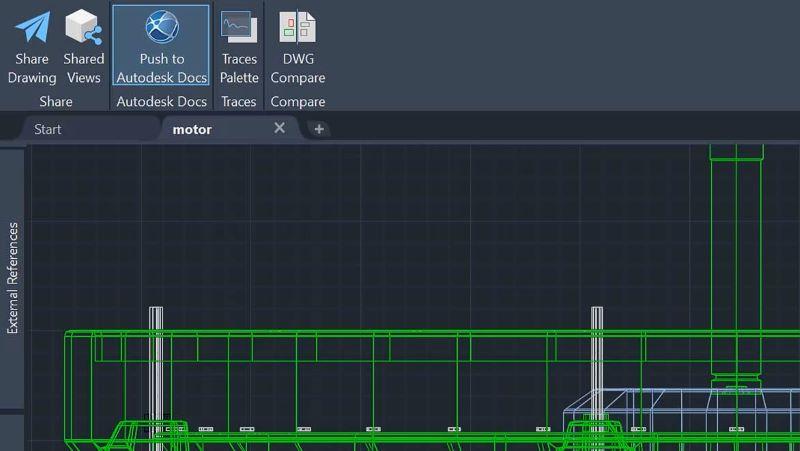Autodesk, Inc has launced Autodesk AI, technology that unlocks creativity, helps solve problems, and eliminates non-productive work across the industries that design and make the world around us. Available in Autodesk products and native to its Design and Make Platform, Autodesk AI provides intelligent assistance and generative capabilities that allow customers to imagine and explore freely while producing precise, accurate, and innovative results.
“As the trusted technology partner for Design and Make industries, Autodesk sees AI as a way for our customers to tackle the challenges they face and turn them into opportunities,” said Andrew Anagnost, President and Chief Executive Officer, Autodesk. “Autodesk AI is the assistant that lowers the learning curve for designers and engineers, supercharges their productivity, and accelerates innovation.”
Few technologies hold as much potential as AI. With experts who have been researching at the forefront of AI for many years, Autodesk is uniquely positioned to continue advancing development of AI for design and make. To date, Autodesk’s AI Lab has published more than 60 peer-reviewed research papers advancing the state of the art in AI and generative AI.
“AI is the future of design and make, and Autodesk is pioneering this transition,” said Anagnost. “We sit at the junction of many of the most creative and impactful industries in the world. We’ll continue to invest in AI because of its transformational potential to drive better outcomes for our customers’ businesses and the world.”
Whether in constructing new buildings and highways, manufacturing products and smart devices, or creating compelling media and entertainment, Autodesk AI is helping customers meet the moment – not just by increasing productivity, but by giving them the tools to be more ambitious and creative.
In the upcoming 2024 State of Design and Make special report on AI, 77% of companies surveyed say they are planning to increase or strongly increase investment in AI in the next three years. Of the leaders surveyed, 66% agree that in two to three years AI will be essential.
“With a commitment to security and ethical AI practices, we’re focused on delivering responsible AI solutions that address our customers’ needs,” said Raji Arasu, Chief Technology Officer, Autodesk. “Autodesk AI will continue to surface across the Autodesk platform–both in our existing products and our industry clouds–to enable better ways of designing and making.”
Today, Autodesk AI is available across the Autodesk portfolio, with new capabilities in constant development. Autodesk AI augments creative exploration and problem-solving; automates repetitive tasks to minimize errors and free up time; and analyzes complex project data to offer predictive insights.
For Architecture, Engineering and Construction:
• Autodesk Forma provides rapid wind, noise, and operational energy analysis so you can make smart early-stage planning and design decisions that improve outcomes.
• In InfoDrainage, the Machine Learning Deluge Tool gives feedback on the best placement for retention ponds and swales to help prevent or reduce the impact of water disasters.
• AutoCAD leverages AI to help drafters iterate faster by reading handwritten and digital markups. It determines the intent of the user to recommend context-aware actions to easily incorporate changes.
• Construction IQ harnesses AI to predict, prevent, and manage construction risks that might impact quality, safety, cost, or schedule.
For Product Design and Manufacturing:
• Recently acquired Blank.AI’s generative AI capabilities will enable conceptual design exploration for the automotive industry, leading to accelerated outcomes and 3D models that can be rapidly created, explored, and edited in real time using semantic controls and natural language without advanced technical skills.
• In Autodesk Fusion, customers can automatically generate product designs that are optimized for manufacturing method, performance, cost, and more.
• Fusion workflows are also being developed to enable automated creation of templatized Computer-Aided Manufacturing toolpaths that can be adjusted by the user as needed. And automated drawings will provide interactive experiences around sheet creation, view placement, and annotation workflows.
For Media and Entertainment:
• Generative scheduling in Autodesk Flow automates scheduling for media and entertainment productions by managing the constantly shifting variables between teams and budgets. Generative scheduling produces results in minutes for a process that has traditionally taken days, enabling teams to predict, plan, and right-size resources to ensure creative bandwidth where needed.
• Autodesk Flame uses AI technology to automate manual tasks such as keying, sky replacement, beauty work, and camera tracking for artists. AI-powered workflows in Maya (currently in beta) provide a new way for artists to interact with Maya scene data using natural language text prompts.
• Through a collaboration with Wonder Dynamics, AI will power a Maya plug-in used to automatically animate, light, and compose computer-generated characters for live-action scenes.






